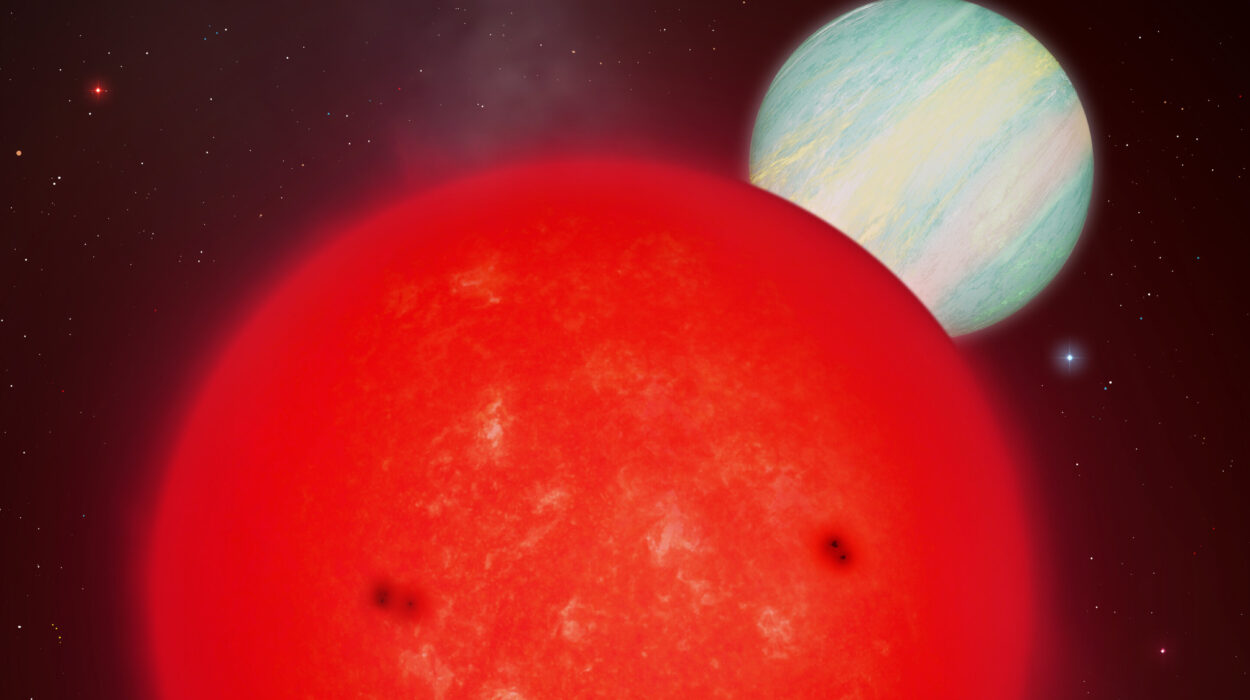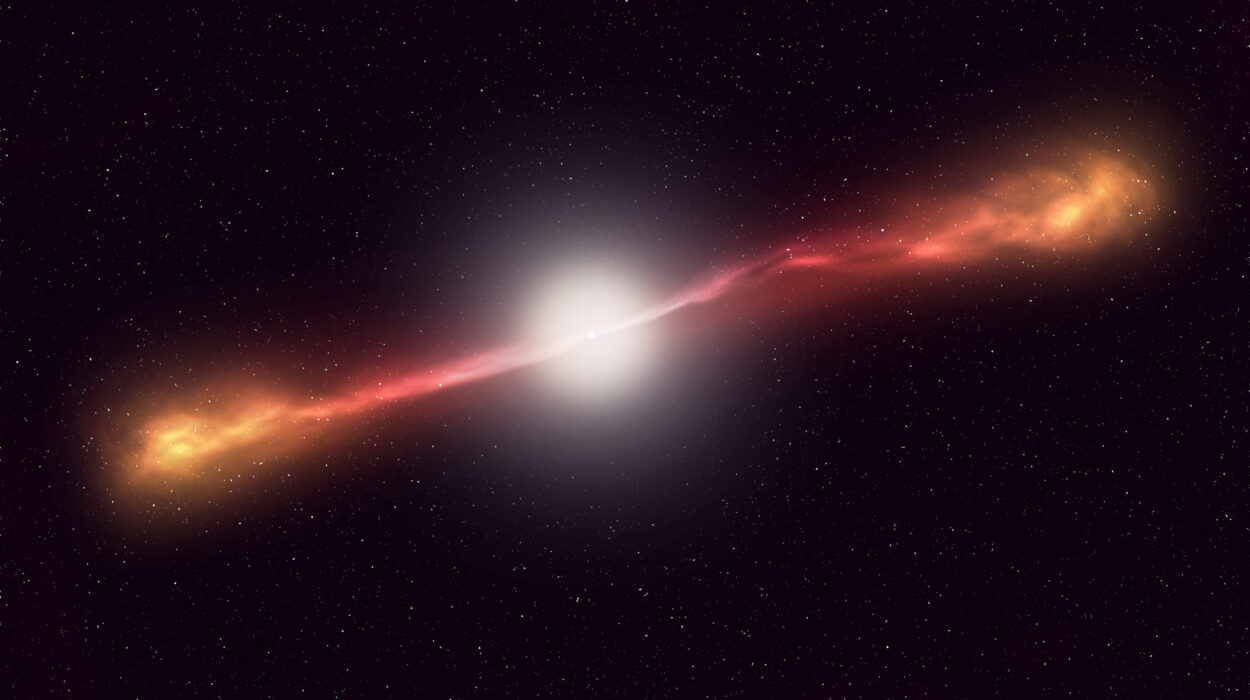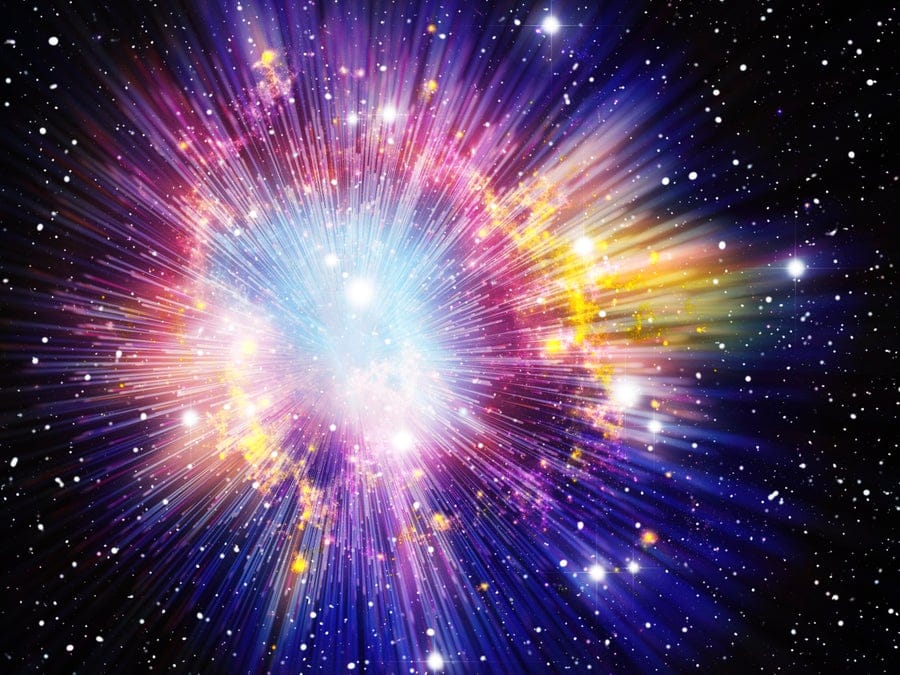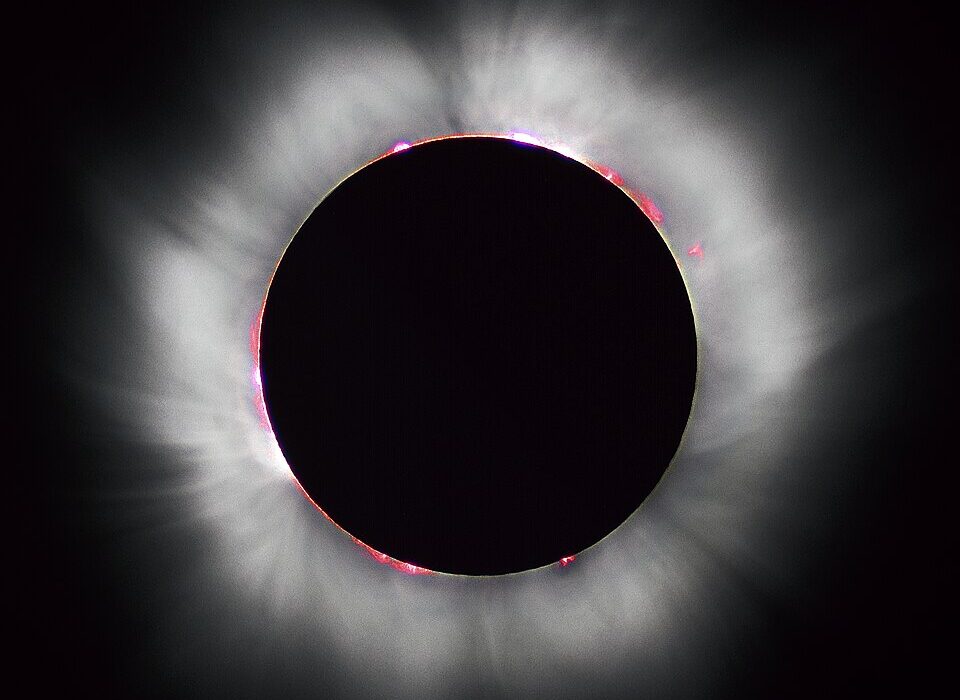For billions of years, the cosmos has carried secrets from its earliest moments—echoes of a time before galaxies, before planets, before even the familiar elements that make up our world. Now, for the first time, astronomers believe they may have glimpsed one of those secrets: the universe’s very first generation of stars.
A team led by Ari Visbal at the University of Toledo in Ohio has found compelling evidence for the existence of Population III stars, long-theorized but never observed remnants of the early universe. Their findings, published in The Astrophysical Journal Letters, are based on an extraordinary analysis of data from the James Webb Space Telescope (JWST), focused on a distant galaxy known as LAP1-B.
If confirmed, this discovery would mark one of the most significant breakthroughs in modern astronomy—a direct window into the cosmic dawn.
The Birth of the First Light
To understand the importance of Population III stars, we must go back more than 13 billion years, to a time when the universe was young, dark, and simple. In the aftermath of the Big Bang, only three elements existed in measurable quantities: hydrogen, helium, and trace amounts of lithium. The heavier elements—carbon, oxygen, iron, and everything that would one day make up planets and life—did not yet exist.
Out of this pristine mix, the first stars ignited. These were the Population III stars, colossal beacons of hydrogen and helium that illuminated the darkness roughly 200 million years after the Big Bang. They were the universe’s first forges of creation, fusing the primordial gases into heavier elements through nuclear reactions and scattering them across space when they exploded as supernovae.
Without them, there would be no carbon in our bodies, no oxygen to breathe, no rocky planets to stand on. These ancient stars were the ancestors of everything that followed—the original architects of the chemical universe.
The Long Hunt for the First Generation
For decades, astronomers have dreamed of finding evidence of these mythical first stars. But their search has been filled with frustration and false starts. Population III stars were short-lived, burning furiously for only a few million years before dying in spectacular explosions. None of them exist today; they vanished billions of years ago.
What remains are the faint signatures they left behind—the light from the galaxies they formed in and the chemical fingerprints in the gas clouds that surrounded them. Detecting such distant, faint signals is like finding the afterglow of a candle that burned out eons ago.
Earlier claims of Population III candidates have been made but later disproven. The objects didn’t match key theoretical expectations about how the first stars should have formed or what their environments should look like.
A Glimpse Into the Ancient Past
The new research by Visbal and his colleagues may finally have changed that. Using JWST’s extraordinary infrared sensitivity, they examined a galaxy called LAP1-B, located at a staggering distance—its light has traveled for more than 13 billion years to reach us. In other words, we are seeing LAP1-B as it existed when the universe was only a few hundred million years old.
What makes LAP1-B so remarkable is that it perfectly matches theoretical predictions for a Population III stellar system. According to the team, the galaxy formed inside a small dark matter halo—a cosmic “seed” about 50 million times the mass of the Sun. This is precisely the kind of environment scientists believe nurtured the first stars.
Even more intriguing, the stars within LAP1-B appear to be massive, ranging from ten to a thousand times the mass of our Sun. These enormous stars are expected to live fast and die young, releasing huge amounts of energy and material into their surroundings when they collapse.
And as theory also predicts, they are not scattered randomly across space. They exist in small, tightly bound clusters, totaling just a few thousand solar masses—a signature pattern of early stellar formation.
The Chemical Clues of the First Stars
The strongest evidence, however, comes from the chemical fingerprints left behind. By analyzing the light spectra from LAP1-B, the researchers found that its surrounding gas is almost entirely pristine—it contains hydrogen and helium, with only trace amounts of heavier elements (“metals,” in astronomical terms).
This lack of metals is crucial. Modern stars, like our Sun, contain significant quantities of elements such as carbon, oxygen, and iron that were created by previous generations of stars. Population III stars, by contrast, formed before any such enrichment had occurred. Their near-pure composition is one of their defining features.
In LAP1-B, the gas shows subtle hints of contamination—just enough to suggest that some of the most massive stars in the system have already gone supernova, enriching their surroundings for the very first time. It’s a cosmic snapshot of the moment when the universe began transforming from simple to complex.
As the researchers wrote, “LAP1-B is the first Pop III candidate to agree with three key theoretical predictions for classical Pop III sources.”
The Role of the James Webb Space Telescope
None of this would have been possible without the James Webb Space Telescope. Launched in 2021, JWST was designed precisely for this kind of work—to peer deep into the universe’s past by detecting infrared light stretched across billions of years of cosmic expansion.
What makes this particular detection even more impressive is that it relied on gravitational lensing, a phenomenon predicted by Einstein’s general theory of relativity. Massive galaxy clusters between Earth and LAP1-B bent and magnified the light from the distant galaxy, allowing JWST to capture details that would otherwise have been invisible.
This natural magnification is like using a cosmic telescope built by nature itself, and it allowed scientists to detect a galaxy that would otherwise have been too faint to see.
What Comes Next
Despite the excitement, scientists are cautious. While LAP1-B fits the theoretical picture of a Population III system almost perfectly, more data is needed before the discovery can be declared definitive. Questions remain about how much material early supernovae released and whether current computer simulations accurately represent the complex physics of the first stars.
Future JWST observations—and possibly next-generation telescopes—will test these findings further. Astronomers plan to examine similar galaxies, using both direct imaging and spectroscopy to search for the unique chemical signatures of pristine stellar populations.
If more examples like LAP1-B are found, they could help map the cosmic dawn in unprecedented detail, revealing how the first stars transformed the universe and paved the way for galaxies, planets, and eventually life.
The Emotional Weight of a Cosmic Discovery
The idea that we are seeing the light of the first stars ever born carries a profound emotional resonance. These stars were the universe’s first attempt at creation—giant furnaces that forged the ingredients for everything that would follow. Every atom of carbon in our cells, every molecule of oxygen in our lungs, once passed through the heart of a star like these.
To glimpse their faint light, across more than 13 billion years of space and time, is to look into our own cosmic ancestry. It reminds us that we are not separate from the universe—we are its continuation. The story of the stars is, ultimately, the story of us.
As the researchers themselves suggest, LAP1-B may only be the tip of the iceberg. With each new observation, astronomers are peeling back the layers of cosmic history, moving ever closer to the moment the universe’s first light flickered into being.
And in that faint glow, we find not only the beginning of the cosmos but also a reflection of humanity’s enduring quest to understand where we come from and what connects us to the stars above.
More information: Eli Visbal et al, LAP1-B is the First Observed System Consistent with Theoretical Predictions for Population III Stars, The Astrophysical Journal Letters (2025). DOI: 10.3847/2041-8213/ae122f






